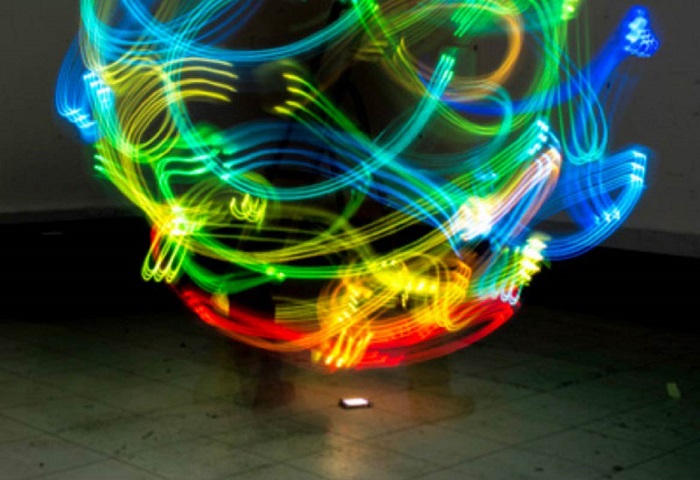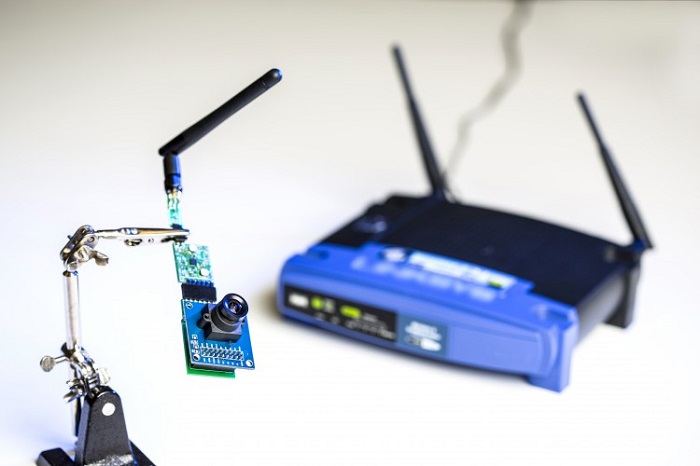Power Over Wi-Fi — PoWiFi for short — is being heralded as one of the more exciting technologies to come along in a while.

For those unfamiliar, it’s the ability to use a common WiFi router to wirelessly power devices throughout a household or office. It was first introduced by a team of researchers out of the University of Washington earlier in 2015, when it proved capable of powering a simple temperature sensor, a low-rez grayscale camera, and a charger for a Jawbone bracelet.
“For the first time we’ve shown that you can use Wi-Fi devices to power the sensors in cameras and other devices,” said lead author Vamsi Talla, a UW electrical engineering doctoral student, at the time the breakthrough was achieved. “We also made a system that can co-exist as a Wi-Fi router and a power source — it doesn’t degrade the quality of your Wi-Fi signals while it’s powering devices.”
In their proof-of-concept demos, the team showed that with their approach, they could power the camera from 17 feet away with enough energy to capture an image once every 35 minutes. They were also able to recharge the Jawbone bracelet’s battery from zero to 41 percent in 2.5 hours.

Where PoWiFi will be of greatest use, and probably the biggest reason why it will eventually prove to be one of more disruptive technologies introduced in a while, is with the Internet of Things. Specifically, PoWiFi will be responsible for powering the small computing sensors that will eventually be embedded in commonplace objects like phones, washing machines, air conditioners, and more. These new components will allow each device to “talk” to one another, and be controlled remotely from its owner’s mobile device.
It’s this challenge that has somewhat stymied the Internet of Things from truly taking off — that is, not being able to figure out how to power the sensors and actuators being added to current technologies, without having to plug them into a power source; this is especially important as these components become smaller and more numerous.
The eureka moment for the U-W team was when they found that the peak energy contained in untapped, ambient WiFi signals typically came close to meeting the operating requirements for low-power devices. The problem they are working through is the fact that these signalers are sent intermittently; that is, energy that is “leaking” out of the system during quiet times.
The team was able to overcome this hurdle by updating a router and optimizing it in such a way that it sends out superfluous “power packets” on WiFi channels that aren’t being used. Basically, these are muscled-up WiFi signals being used for power delivery. What’s great is they were able to do this without affecting the speed or overall quality of the data transmission taking place on the router’s other channels.
The group also created a series of updated sensors that were optimized for this new form of energy harvesting, and applied them to the aforementioned test devices.
During the proof-of-concept period, the team tested their system out in six homes. During these experiments, Internet users did not report any lag when it came to web page uploads, or delays in video streaming services.
“In the future, PoWiFi could leverage technology power scaling to further improve the efficiency of the system to enable operation at larger distances and power numerous more sensors and applications,” said co-author Shyam Gollakota, assistant professor of computer science and engineering.
To learn more, read the published paper, entitled “Powering the Next Billion Devices with Wi-Fi”, which will be formally presented in December at the Association for Computing Machinery’s CoNEXT2015 conference.
Via the University of Washington
Advertisement
Learn more about Electronic Products Magazine





